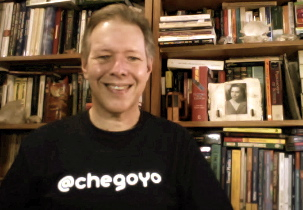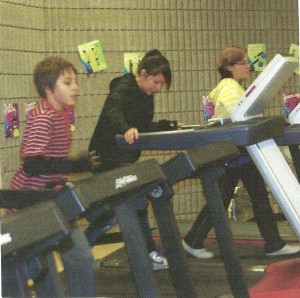Archive for the ‘Learning Difficulties’ Category
 “Pumpkin for mental health!” – Doc Meek
“Pumpkin for mental health!” – Doc Meek
13 Health Benefits of Pumpkin,
According to Science
(+8 Pumpkin Recipes)
A solid foundation for overcoming learning problems is good mental and bodily health. Here is a guest article about the extensive health benefits of the “lowly” pumpkin (not just at Halloween, but year round), courtesy of Jesse Miller:
Pumpkin offers major health benefits that go beyond those of other superfoods I’ve come across. Even though pumpkins are seasonal foods, they’re full on flavor and nutrition. You can make pumpkin puree, serve mashed pumpkins with chicken recipes, or add them in your soups. There’s so much to gain from pumpkin as a superfood for a healthier lifestyle.
Pumpkins are characterized by high amounts of vitamin A, vitamin E, dietary fiber, thiamin, and folate. They also contain a good amount of dietary zinc and manganese that reduces inflammation and lowers level of neurological damage in healthy individuals. They’re good for heart health, healthy vision, anti-cancer benefits, and for the treatment of high blood pressure conditions.
Other than a Thanksgiving treat, pumpkins are popularly cooked for low-calorie meals. Looking at the way pumpkin benefits the human body, it’s a surprise why you haven’t gotten the most out of it, yet.
See the 13 Health Benefits of Pumpkin (+ 18 Pumpkin Recipes) at this link:
https://www.jenreviews.com/pumpkin/
- Thanks to Jesse Miller of JenReviews.com for this great guest article!
- Doc Meek, Sherwood Park, Alberta, Canada, March 18, 2017
 Merry Christmas from Doc and Jeannette Meek
Merry Christmas from Doc and Jeannette Meek
Merry Christmas to all
our friends and family
Enjoy our goofy short video:
We are decorating our home
outdoors for this great season!
Go to:
https://www.youtube.com/watch?v=qYEhc5fMG8Y
Kindness, Collins (Doc) and Jeannette Meek, Sherwood Park, Alberta, Canada, December 25, 2016
 “Knowledge is Power.” – Doc Meek
“Knowledge is Power.” – Doc Meek
A single hour a day, steadily given to the
study of some interesting subject, brings
unexpected accumulations of knowledge.
William Ellery Channing – 1780-1842, Preacher
………………………………………………………………………………
Knowledge is Power
I’m a lifelong learner and Irish storyteller that is fond of saying, “Knowledge is Power.”
“Not if you don’t apply it,” says his practical businesswoman wife, Jeannette Meek.
- Doc Meek, Sherwood Park, Alberta, Canada, Sunday, November 13, 2016
 “Contemplative Pedagogy?” – Doc Meek
“Contemplative Pedagogy?” – Doc Meek
Thank you, Jose Alvarez-Cornett!
In this world of ours, so obsessed with intellectual content, logic, intellectual reasoning, hard science, and so on, it is refreshing to find someone (Jose Alvarez-Cornett, above) who knows it is also important for all students to think with their heart, to seek peace within as a proven means for more effective learning.
Want to study easier and remember longer?
If you wish fervently to study easier and remember longer, know that your emotional state of mind is a “priming pump for the best flow of water” you can experience as a living, loving lifelong learner!
Peace within = peace without (including important learning tasks).
Doc Meek, Sherwood Park, Alberta, Canada, Sat, Oct 22, 2016
P.S. People who say that “contemplative pedagogy” or “mindfulness meditation” is a religion and have no place in public institutions of learning know neither the learning capability of the human mind, nor what religion is.
 Think and Do! – Doc Meek
Think and Do! – Doc Meek

Hood Canal Cabin sits well above the beach
on four 24″ roundpilings and features a
retractable stair for security.
Ray C. Freeman III, Seattle. freeman-wetzel.com
Think and Do! – Doc Meek
I’ve been planning to build a “safe” house for many years.
By “safe” I mean free of radon and man-made chemicals.
This is not easy to do in our culture (Canada & USA).
My wife Jeannette says, “Stop planning and researching
and start building!”
“I could have built the house and torn it down and re-built
it better 3 times while you are still planning and researching!” :O)
Learning by Doing
Academics in public education and universities would
Do well to heed my wife Jeannette!
This reminds me of my credo: “True education connects
the “4-H’s” of Learning: HEAD/HEART/HANDS/HOPE.
Read Taylor Halverson’s article in the Deseret News:
“Learning by doing, not just by reading and listening.”
http://www.deseretnews.com/article/865660605/Learn-by-doing-not-just-by-reading-and-listening.html
The irony comes if you just read Taylor Halverson and
don’t think of a way to do some actual doing with your
kids (“hands on” and with “heart”), say with their
homework, in contrast to just reading.
Some call it “experiential learning,” a great way to
actually really learn (and remember the learning!).
Mesa, Arizona, actually does it
Because “learning by doing” tends to be underdone in
high schools, my dear friend Dr Keith Crandell helped
Arizona build specialty larger-area school districts which
overlay a group of high schools so that the students can
have great access to highly-developed “learning by doing”
curriculums.
See www.EVIT.com
Recognized by TIME Magazine as “learning that works.”
- Doc Meek, Sherwood Park, Alberta, Canada
Friday, Sept 2, 2016
 Bullying versus Ignoring. – Doc Meek
Bullying versus Ignoring. – Doc Meek
Bullying versus
Ignoring
Much has been written recently (2010-2016) about bullying. Of which, more later.
Here I want to raise the importance of the supposed “opposite” of bullying.
Ignoring
It turns out that ignoring is not so “opposite” of bullying.
Think about it.
If someone you care about (or even a casual acquaintance) gives you the “silent treatment” for some unknown reason, it is very disconcerting to say the least.
It can be devastating!
If everybody is ignoring me (which happens in public schools and other settings regularly), then–holy cow!–what’s the matter with me!?
Much work needs to be done to find specific ways to include those who aren’t just on the sidelines–they are being ostracized by zero contact.
They are being bullied by the “silent treatment”–by being ignored.
What can you do?
Think about it.
What could you do (as a teacher or a parent) to find pathways of inclusion for those who are isolated (for whatever reason).
What can I do?
Doc Meek, Sherwood Park, Alberta, Canada, Sunday, July 10, 2016
 Get exercise a fun oddball way. – Doc Meek
Get exercise a fun oddball way. – Doc Meek
I am always reminding teachers and students (and parents) that the brain requires movement of the body to thrive and learn better.
REMINDER: “FREEZE THE BODY, FREEZE THE MIND”
I read of an unusual fun exercise program in South Africa.
Photo from www.123RF
 4 Low-cost Engaging Lessons for Middle Schoolers – Susan Lee
4 Low-cost Engaging Lessons for Middle Schoolers – Susan Lee
Doc Meek thanks Susan Lee for her helpful guest article here!
4 Inexpensive, Engaging Lessons for
Middle Schoolers
Middle school teachers spend a great deal of time designing lessons that are engaging, yet easy on their wallets. As states cut education funding and schools struggle to provide supplies and materials other than the most basic essentials, teachers are left to find inexpensive activities for their classrooms. To make the process a little easier, here are three inexpensive, engaging lessons for middle schoolers that are sure to make both the students and the teachers happy.

PHOTO CREDIT: Image via Pixabay by wilhei
-
Going to Great Lengths – Middle School Math Lesson
Measurement and estimation are two important concepts in middle school math. To make it more engaging than having students measure using worksheets, or even measuring predetermined objects, send students on a scavenger hunt around the classroom or school.
To begin, group students evenly int0o teams. Place three objects of varying length in the front of the classroom and ask each team to estimate the length of each object. Don’t give them the unit of measurement, so that you can formatively assess their ability to use correct measurement units. (*Hint: Choose objects that would require different units, such as inches, feet, and yards.) Then, ask for volunteers to come up front and measure the objects to s0ee which team’s estimate was closest to being accurate. (*Hint: If you don’t have enough rulers or yard sticks for each team, cut string to the length of a ruler and yard stick and use a marker to mark off the inches/feet.)
Then, instruct the teams to leave their measuring tools at their seats while they scour the classroom or designated school areas for items that correspond to your measurement specifications. Teams will have to estimate the lengths of the objects when choosing them, and then return to their tables to measure the objects’ actual length. The team with the objects that are closest to your requested measurements wins.
-
Vocabulary Hot Potato – Middle School Language Arts or Social Studies Lesson
Whether you are teaching academic vocabulary or vocabulary specific to a text or spelling lesson, you can teach it and have students practice it in a more engaging way with Hot Potato Vocabulary. This inexpensive, engaging vocabulary lesson requires a small foam ball or tennis ball, a source of music (radio, iPod, CD player, etc.), your students, and a list of the vocabulary terms. By the way, you may be a little leery of playing a physical game in your classroom, but don’t fret: there are strategies for classroom management during gameplay that are very effective.
Instruct students to stand in a circle. They should have their vocabulary lists on the floor at their feet, or you can direct them to a large poster of the vocabulary lists hanging on the wall near them somewhere. You will begin playing the music at a minimal volume, and you will toss the ball to a student while the music plays. Students continue to toss the ball to one another until you stop the music, a la musical chairs.
When you stop the music, give a definition or example of one of the vocabulary words to the student who was caught holding the ball when the music stopped. If the student answers correctly, he remains in the game. If he answers incorrectly, he returns to his seat and completes a vocabulary activity that you have prepared ahead of time. The game continues until you run out of vocabulary words, or until there is only one student left in the game.
-
Pirates – Middle School History Unit
Middle schoolers respond best to lessons that are fun and engaging, and few historical topics meet those requirements better than the study of pirates. To kick off your unit on pirates, you might surprise the kids by showing up in a pirate costume. It’s a great way to get the lesson off to a fun start and it’s sure to get their attention right off the bat.
Then, get rolling with a few of the activities offered by the New England Pirate Museum. For example, have your students research a well-known pirate and then write a few entries in that pirate’s diary. You could also have students research and sketch the different types of ships that were used by pirates. Another great option is to have students research pirate vocabulary and choose the provided definition that would have been most applicable to a pirate’s way of life. Finally, you might end the unit with a scavenger hunt using pirate-fact inspired clues.
-
Levitating Orbs – Middle School Science Lesson
Static electricity is one of the most fun concepts to teach to middle schoolers, especially because many of them have had personal experience with being zapped by it at some point. For this inexpensive, engaging lesson on Levitating Orbs, you will need PVC pipe, about one inch wide by 24 inches long. If you don’t have any pipe, a regular balloon will work as well. You also will need mylar tinsel [not metallic tinsel] left over from Christmas, but make sure that you find the thinnest and narrowest possible. There’s a good chance you will be able to find some in a clearance bin at a discount store or craft store, no matter the time of year you look. You’ll also need one head of clean, dry hair and scissors.



Photo from: www.ScienceBob.com
Tie six strands of tinsel together at one end, and then tie another knot about six inches from the first knot. Cut off the loose strands. Charge the pipe (or balloon) by rubbing it back and forth on your head for about 10 seconds. Then, hold the mylar orb by the knot above the pipe (or balloon) and let it drop to touch the charged object. The orb should repel and begin to float. (*Note, you should try this before doing it with the class, because if the mylar sticks it is more than likely too thick and not going to work.)
Students should then experiment by making orbs with more or fewer strands of tinsel, trying to create static electricity with other materials, such as their clothes, especially if some are wearing wool sweaters or furry boots, and timing to see how long the charge lasts. Can they do anything to make the charge last longer? Give students time to conduct their own investigations and experiments and then report their results.
Nearly any lesson can become an inexpensive, engaging activity when you share your enthusiasm and love of learning with students. Don’t be afraid to substitute materials to save money, or to approach local businesses for donations or discounts when you show your teacher ID.
Susan Lee may be a former teacher, but she is a lifetime educator. As a mother to three college-age children, she knows how difficult paying for college can be. And that’s why she finds her work with OutsideScholarships.org so rewarding. As a writer and researcher, she loves being able to connect students in need with the scholarships that help make achieving their dreams possible. In her spare time, she loves camping with her husband and volunteering at a local animal shelter.
 “Dance to your heart’s content.” – Doc Meek
“Dance to your heart’s content.” – Doc Meek
Image: Allison Cameron’s Classroom in Saskatchewan
You gotta have fun doing it!
I’ve always said that the brain requires body movement. I use the word “movement” because people groan when I mention the word “exercise” (including me!). 😮
And you have to use the form of movement that you love, or at least is fun.
Why do I have to exercise in a “fun” way?
So that you will keep it up every day (or almost every day) and keep your brain!
“…studies have shown that dancing actually reduces anxiety. In one study reported in Psychology Today, patients who suffered with anxiety were assigned to one of four classes: math, music, exercise or a modern dance class. Only those who took the modern dance class saw a significant reduction in their anxiety.”
– Becky Griffin in Deseret News at this link:
http://www.deseretnews.com/article/865626508/Are-youth-dances-outdated.html
Thank you, Becky Griffin!
Doc Meek, Sherwood Park, Alberta, Canada, Saturday, April 18, 2015
 “Walking daily helps everything!” – Doc Meek
“Walking daily helps everything!” – Doc Meek

Dr. Kenny Handelman (Image from: DrKenny.com)
ADHD Expert Spells it Out
I just received a newsletter from Dr Kenny Handelman, a Child and Adult Psychiatrist who has a private practice in Oakville, Ontario, Canada.
He said he is sometimes challenged with, “What is the best natural treatment for those struggling with ADHD?”
He says he knows of one natural treatment that:
– calms the nerves
-increases focus and concentration
– reduces stress and frustration
– helps you sleep better
Exercise is King
In my practice, I have always advocated body movement as an effective antidote for ADHD stress and frustration and lack of focus.
I call it “Body Movement” because many people have negative feelings about the word “Exercise.”
As Dr Handelman says, “It is not easy for a person with ADHD to exercise.”
So I always promote something that is fun and enjoyable that gets the body moving outside in the sun (or the rain!) and fresh air. If rain dampens your spirits, walk in the shopping mall! Leave your wallet at home. 😮
Walking helps Everything
A friend of mine was extremely sick, so sick he could not get out of bed. The doctors could not help him.
He said to his wife, “If I continue to lie here in bed, I will surely die here.”
He asked her to help him stagger forth with a cane.
He said he had learned over a lifetime that “walking helps everything.”
The first day he got only as far as half way down the driveway before he collapsed and his wife had to drag him back to bed.
Day two he got to the end of the driveway before he collapsed.
Would it surprise you to learn that he started to heal from his severe illness?
Walkin’ down the road
He now walks for several miles every day and is “healthy as a horse,” as they say.
He repeats to me, “Walking helps everything.”
And it certainly helps ADHD.
Kids (and adults) who are overwhelmed with a mental task, can take “time out” and move briskly (doing whatever) with the whole body for 20 minutes, and “bring on” several hours of concentrated mental activity. Wow!
Bounce on a mini-trampoline if you don’t like walking.
If you don’t want to bounce, and you can’t go outdoors, just run on the spot. Does wonders!
20 minutes!
Sweat a little. It will do you a world of good.
In more ways than one.
Thank you, Dr Kenny!
Doc Meek, Sherwood Park, Alberta, Canada, Tues, April 14, 2015






